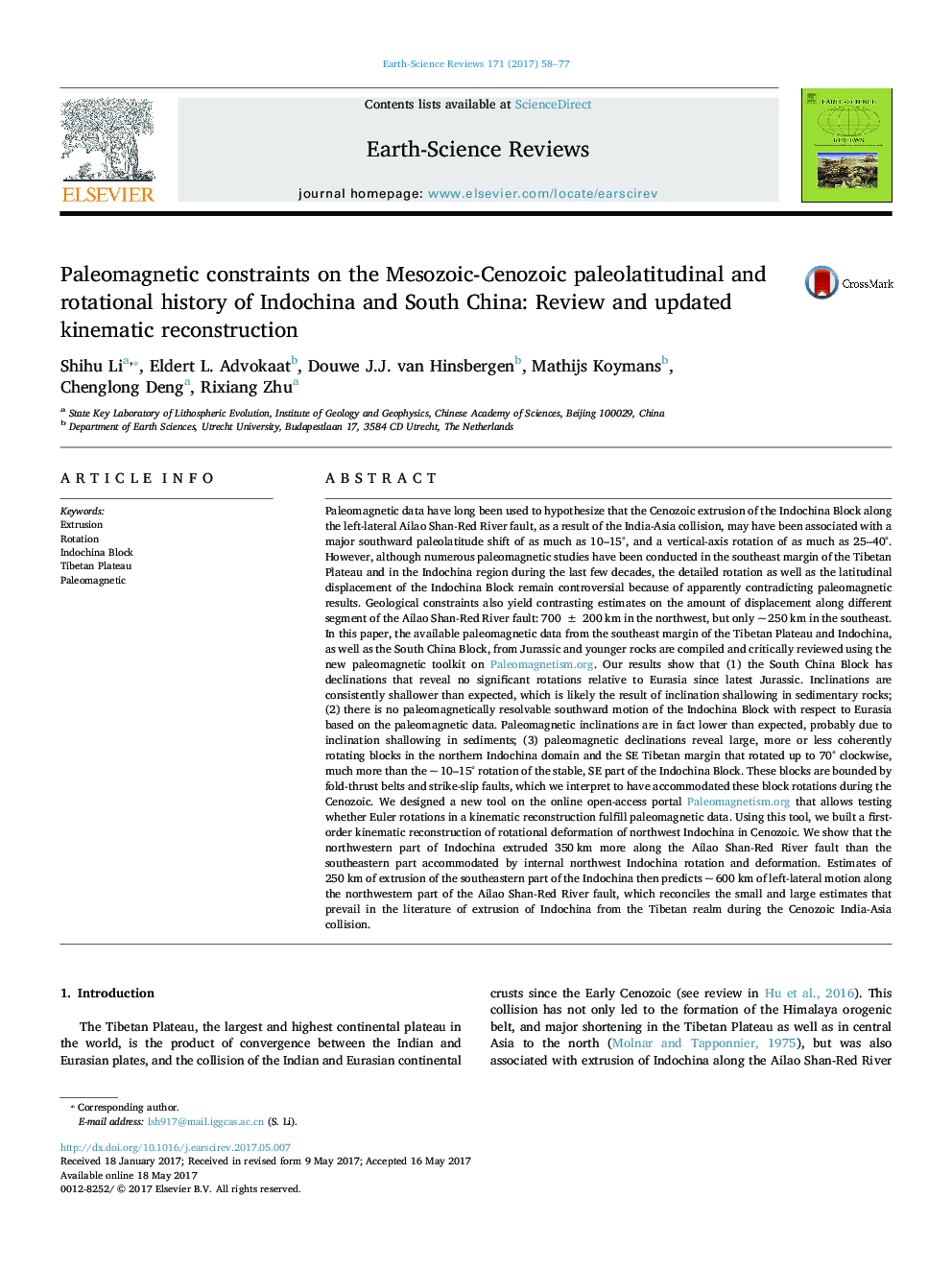| کد مقاله | کد نشریه | سال انتشار | مقاله انگلیسی | نسخه تمام متن |
|---|---|---|---|---|
| 5785078 | 1639931 | 2017 | 20 صفحه PDF | دانلود رایگان |
- A critical review and compilation on the available paleomagnetic data from the South China and Indochina Blocks;
- A updated kinematic reconstruction of Cenozoic deformation of Indochina;
- The first reconciles regarding the small and large estimates of Indochina extrusion along the Ailao Shan-Red River fault.
Paleomagnetic data have long been used to hypothesize that the Cenozoic extrusion of the Indochina Block along the left-lateral Ailao Shan-Red River fault, as a result of the India-Asia collision, may have been associated with a major southward paleolatitude shift of as much as 10-15°, and a vertical-axis rotation of as much as 25-40°. However, although numerous paleomagnetic studies have been conducted in the southeast margin of the Tibetan Plateau and in the Indochina region during the last few decades, the detailed rotation as well as the latitudinal displacement of the Indochina Block remain controversial because of apparently contradicting paleomagnetic results. Geological constraints also yield contrasting estimates on the amount of displacement along different segment of the Ailao Shan-Red River fault: 700 ± 200 km in the northwest, but only ~ 250 km in the southeast. In this paper, the available paleomagnetic data from the southeast margin of the Tibetan Plateau and Indochina, as well as the South China Block, from Jurassic and younger rocks are compiled and critically reviewed using the new paleomagnetic toolkit on Paleomagnetism.org. Our results show that (1) the South China Block has declinations that reveal no significant rotations relative to Eurasia since latest Jurassic. Inclinations are consistently shallower than expected, which is likely the result of inclination shallowing in sedimentary rocks; (2) there is no paleomagnetically resolvable southward motion of the Indochina Block with respect to Eurasia based on the paleomagnetic data. Paleomagnetic inclinations are in fact lower than expected, probably due to inclination shallowing in sediments; (3) paleomagnetic declinations reveal large, more or less coherently rotating blocks in the northern Indochina domain and the SE Tibetan margin that rotated up to 70° clockwise, much more than the ~ 10-15° rotation of the stable, SE part of the Indochina Block. These blocks are bounded by fold-thrust belts and strike-slip faults, which we interpret to have accommodated these block rotations during the Cenozoic. We designed a new tool on the online open-access portal Paleomagnetism.org that allows testing whether Euler rotations in a kinematic reconstruction fulfill paleomagnetic data. Using this tool, we built a first-order kinematic reconstruction of rotational deformation of northwest Indochina in Cenozoic. We show that the northwestern part of Indochina extruded 350 km more along the Ailao Shan-Red River fault than the southeastern part accommodated by internal northwest Indochina rotation and deformation. Estimates of 250 km of extrusion of the southeastern part of the Indochina then predicts ~ 600 km of left-lateral motion along the northwestern part of the Ailao Shan-Red River fault, which reconciles the small and large estimates that prevail in the literature of extrusion of Indochina from the Tibetan realm during the Cenozoic India-Asia collision.
Journal: Earth-Science Reviews - Volume 171, August 2017, Pages 58-77
